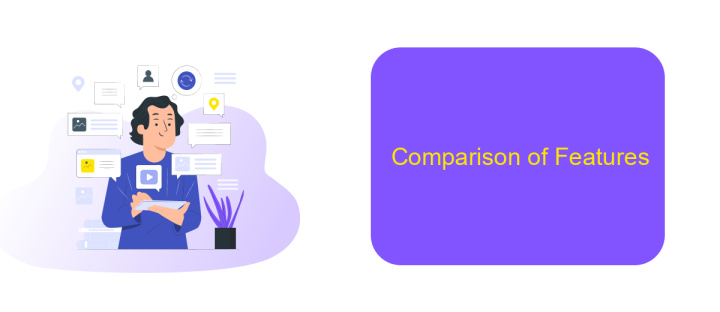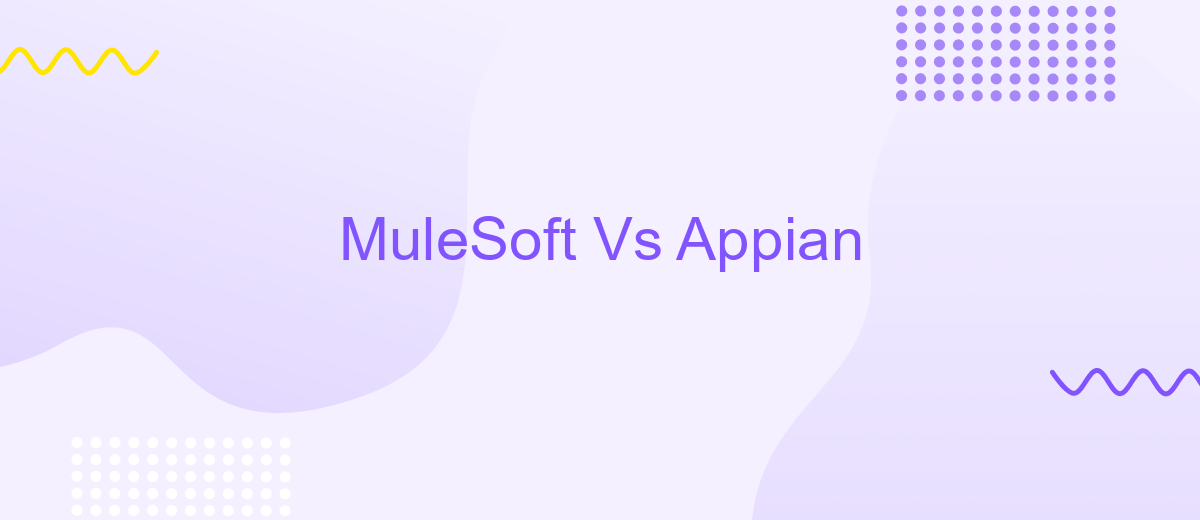MuleSoft Vs Appian
In today's rapidly evolving digital landscape, businesses are increasingly seeking robust integration and automation solutions to streamline their operations. MuleSoft and Appian are two leading platforms that cater to these needs, each offering unique capabilities and benefits. This article delves into a comparative analysis of MuleSoft and Appian, exploring their features, strengths, and potential use cases to help organizations make informed decisions.
Introduction
In today's fast-paced business environment, organizations are constantly seeking ways to streamline their operations and improve efficiency. Two prominent platforms that have gained significant attention in the realm of business automation and integration are MuleSoft and Appian. While both platforms offer robust solutions, they cater to different needs and use cases, making it crucial for businesses to understand their unique features and capabilities.
- MuleSoft specializes in API-led connectivity, enabling seamless integration across various systems and applications.
- Appian focuses on low-code automation, allowing users to build complex workflows with minimal coding efforts.
- Both platforms aim to enhance operational efficiency and drive digital transformation within organizations.
Choosing the right platform depends on several factors, including the specific requirements of your business, the existing technology stack, and the desired outcomes. By comparing MuleSoft and Appian, businesses can make informed decisions on which platform aligns best with their integration and automation goals, ultimately leading to improved productivity and innovation.
MuleSoft Overview

MuleSoft is a leading integration platform that enables businesses to connect applications, data, and devices seamlessly. With its flagship product, Anypoint Platform, MuleSoft provides a comprehensive suite of tools for API design, development, and management. This platform allows organizations to create a network of applications by connecting them through APIs, ensuring efficient data flow and communication across different systems. MuleSoft's robust architecture supports various integration patterns, making it suitable for both on-premises and cloud-based environments.
One of the key features of MuleSoft is its ability to streamline complex integration processes, reducing the time and effort required to connect disparate systems. By leveraging pre-built connectors and templates, users can quickly set up integrations without extensive coding. Additionally, services like ApiX-Drive can complement MuleSoft by offering automated workflows and real-time data synchronization, further enhancing the integration capabilities. This combination of powerful tools and services makes MuleSoft a preferred choice for enterprises looking to modernize their IT infrastructure and achieve seamless connectivity.
Appian Overview

Appian is a powerful low-code automation platform that enables businesses to build applications quickly and efficiently. It combines process automation, data management, and artificial intelligence to streamline operations and drive digital transformation. With its intuitive drag-and-drop interface, users can create sophisticated workflows and integrate various systems without extensive coding knowledge.
- Low-code development: Simplifies application creation with minimal coding.
- Process automation: Streamlines business processes for improved efficiency.
- AI and machine learning: Enhances decision-making and operational insights.
- Data management: Centralizes and organizes data for better accessibility.
- Integration capabilities: Seamlessly connects with other systems and applications.
Appian's robust integration capabilities allow businesses to connect with various third-party services, including ApiX-Drive, to automate data transfer and synchronization. This ensures that all systems work together harmoniously, reducing manual effort and minimizing errors. By leveraging Appian, organizations can accelerate their digital transformation journey and achieve greater agility and innovation.
Comparison of Features

MuleSoft and Appian are both powerful platforms designed to enhance business operations, but they serve different purposes. MuleSoft is primarily an integration platform that allows businesses to connect applications, data, and devices with APIs. Appian, on the other hand, is a low-code automation platform that focuses on building enterprise applications and automating workflows.
When comparing their features, it's essential to consider the specific needs of your business. MuleSoft excels in API management and integration, making it ideal for companies with complex IT ecosystems. Appian shines in rapid application development and process automation, suitable for organizations looking to streamline operations and improve efficiency.
- Integration Capabilities: MuleSoft offers robust API management tools, while Appian provides integration through its low-code platform.
- Ease of Use: Appian's low-code environment is user-friendly, whereas MuleSoft requires more technical expertise.
- Scalability: Both platforms are scalable, but MuleSoft is particularly strong in handling large-scale integrations.
- Automation: Appian excels in process automation, whereas MuleSoft focuses on automating data flows between systems.
For businesses that need to integrate multiple applications and data sources, MuleSoft is a strong contender. However, if your goal is to rapidly develop and automate business processes, Appian may be the better choice. Additionally, services like ApiX-Drive can complement these platforms by providing seamless integration solutions.
Conclusion
In conclusion, both MuleSoft and Appian offer robust solutions for enterprise integration and automation, each with its own strengths. MuleSoft excels in API management and complex integrations, making it ideal for organizations with diverse and extensive integration needs. Appian, on the other hand, shines in its low-code capabilities, enabling rapid application development and process automation, which is particularly beneficial for businesses seeking agility and speed.
When choosing between MuleSoft and Appian, it is crucial to consider the specific requirements of your organization. For those who need a seamless way to integrate various applications and services, ApiX-Drive can be an excellent supplementary tool, providing a user-friendly interface and efficient integration capabilities. Ultimately, the decision should align with your strategic goals, technical landscape, and the specific challenges you aim to address.
FAQ
What are the primary differences between MuleSoft and Appian?
Can MuleSoft and Appian be used together?
Which platform is better for API management?
Is it easier to build applications with MuleSoft or Appian?
What are some common use cases for MuleSoft and Appian?
Apix-Drive will help optimize business processes, save you from a lot of routine tasks and unnecessary costs for automation, attracting additional specialists. Try setting up a free test connection with ApiX-Drive and see for yourself. Now you have to think about where to invest the freed time and money!

